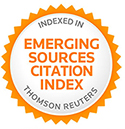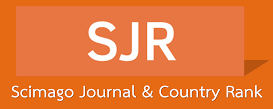Propuesta metodológica para estudios de dinámica de uso urbano utilizando la teledetección: Maracay, estado Aragua-Venezuela.
Resumen
La información proveniente de sensores remotos y concretamente de las imágenes de satélite posee un valor científico potencial para los investigadores en las áreas de los estudios agrícolas, urbanos, ambientales, ingenieriles, entre otras. Su importancia en los estudios que abordan las interacciones ambiente sociedad, particularmente en los usos del suelo y los cambios a que están sujetos es muy grande. También lo es en los estudios de dinámica urbana, como componente de los usos del suelo, en las tendencias de crecimiento que muestra la población y poseen un valor práctico al proveer información predictiva acerca de los eventos socialmente significativos tales como hambrunas y enfermedades epidémicas. En el marco de lo expuesto en el presente artículo se presentan los resultados de una investigación dirigida a dilucidar la dinámica de ocupación y transformación de los usos del suelo para la ciudad de Maracay y sus alrededores. Se enfatiza en los procedimientos metodológicos a seguir y en la forma de analizar los resultados.
Palabras clave
Texto completo:
PDFReferencias
ALWASHE, M. A; JUTZ, S. and ZILGER, J.
Integration of SPOT and Landsat
thematic mapper data for land-use and urban
mapping of At’taif, Saudi Arabia. Int.
Geoscience & Remote Sensing Symp. 629.
Edinburgh, UK.
ANGLUGINO, R; MAZZOCATO, M.; TORRUSIO,
S. y RIVERA, A. 1988. Utilización
de imágenes Landsat en la determinación
de la densidad poblacional en el conurbano
Bonaerense. Centro de Análisis
y Procesamiento Digital de imágenes
Satelitarias (C.A.P.D.I.S.) Buenos Aires.
Int. Geoscience & Remote Sensing Symp.
(IGARSS’88). 629. Edinburgh, UK.
BARALDI, A. and PARMIGGIANI, F. 1990.
Urban area classification by multispectral
SPOT images. IEEE Trans. Geoscience
and Remote Sensing. 4: 674-
BARNSLEY, M. J. and SADLER, G. J. 1990.
Use of population density data to improve
classification accuracies in remotelysensed
images of urban areas. Paper present
at the First European Conference on
Geographical Information Systems. Amsterdam,
The Netherland.
BARNSLEY, M. J.; SADLER, G. J. and SHEPHERD,
J. W. 1989. Integrating remotely
sensed images and digital map data in the
context of urban planning. Paper present
at the 15th Annual Conference of Remote
Sensing Society. University of Bristal.
BAUDOT, Y.; NADASDI, I. and DONNAY, J.
Towards and urban land-use classification
using textural and morphological
criteria. Int. Geoscience & Remote Sensing
Symp. 211-212. (IGARSS’88), Edinburgh,
UK.
BOTELLO, O. 1987. Historia de Maracay.
Tomo I. Editorial Miranda. Maracay-
Venezuela.
BRUIJN, C. A. 1978. Delineation urban areas
from Landsat images using digital processing:
A comparison with grid-based
photo-interpretation, Proc. International
Symposium on Remote Sensing for Observation
and Inventory of Earth Resources
and the Endagered Environment.
-916. Freiburg.
CARTER, P. and STOW, B. 1979. Clean-up of
digital thematic maps of urban growth extracted
from Landsat imagery. En: Allan
Harris (Eds). Remote Sensing and National
Mapping. 27-40. Reading.
CASAS, J. y CHUVIECO, E. 1987. Análisis
visual de imágenes “thematic mapper”
para el estudio urbano. El caso de la ciudad
de Madrid. Anales de Geografía
de la Universidad Complutense. N°
, pp 399-412.
CHENG, F. and THIEL, K. H. 1995. Delimiting
the building heights in a city from the
shadow in a panchromatic SPOT image-
Part 1. Test of forty-two buildings.
International Journal and Remote
Sensing, vol. 16 (3):409-415.
CHARBONNEAU, D. and ROYER, A. 1993.
Analysis of different methods for monitoring
the urbanization process. Geocarto
International. 7 (1): 17-25.
CHUNG, J. J. 1989. Spot pixel analysis for
urban ecosystem study in Salt Lake city,
utah. Unpublished Master Thesis. Department
of Geography, University of Utah.
CHUVIECO, E. 1985. Aportaciones de la
teledetección espacial a la cartografía
de la ocupación del suelo. Anales de
Geografía de la Universidad Complutense.
N° 5, pp. 29-48.
CHUVIECO, E. 1996. Fundamentos de
teledetección espacial. Madrid, Rialp.
CROSETTO, M; CASTILLO, M. and ARBIOL,
R. 2003. Urban subsidence monitoring
using radar interferometry: Algoritms
and validation. Photogrammetric Engineering
and Remote Sensing, 69
(7): 775-784.
COWEN, D. J. and JENSEN, J. R. 1998. Extraction
and modelling of urban attributes
using remote sensing technology. En: D.
Liverman, E. F Moran, R.R Rindufs, y
P.C Stern, Editors. People and Pixels:
Linking Remote Sensing and social
sciences. 164-188. National Academy
Press, Washington, D.C.
DEPRATS, J. F. et DUTARTRE, P. 1995. Telédèction
et systéme d`information
urbains. Ed. Economic, collection villes,
Coordené par Francoise Dureau y Christiane
Weber, Paris.
DE SHERBININ, A; BALK, D; JAITEH, M;
POZZI, F; GIRI, C. and WABBEBO, A.
A CIECIN thematic guide to social
science applications of remote sensing,
URL. Columbia University, New York.
DIETRICH, D.L. and LACHOWOSKY, H.
M. 1978. Identification and delineation
of urbanized areas using Landsat data.
Proc. 12th International Symposium on
Remote Sensing and National Mapping.
-1090. Reading.
DUDLEY-MURPHY, E. 1990. Monitoring urban
growth change in México City with
merged TM and SPOT data. Unpublished
PhD dissertation, Departament of Geography,
University of Utah.
DUREAU, F; LORTIC, B; MICHEL, A y SOURIS,
M. 1995. Informática, teledetección
y observación de las poblaciones urbanas.
Una investigación vigente en Quito
(Ecuador). ORSTOM (Institut Français de
Recherche Scientifique pour le Developpement
en Coopération).
DUREAU, F. et WEBER, CH. (coord). 1995.
Teledétèction et systémes d’information
urbains Ed. Económica, collection
villes, Paris.
FROSTER, B. 1980. Urban residential ground
over using Landsat digital data. Photogrammetric
Engineering and Remote
Sensing, 46: 1547-1553.
FROSTER, B. 1993. Satellite remote sensing
for land information in developing countries.
Geocarto International, 46: 545-
FUNG, T. 1992. Land use and land cover
change detection with Landsat MSS and
SPOT HRV data in Hong Kong. Geocarto
International, 3.
GASTELLU, J. P. 1990. An assessment of
SPOT XS and Landsat MSS data for digital
classification of near urban land cover.
International Journal and Remote
Sensing, vol. 11 (82) pp.225-235.
GONG, P. and HOWARTH P.J. 1992. Land
use classification of SPOT HRV data using
a cover frecuency method. International
Journal of remote Sensing. Vol.
(8): 1459-1471.
GOWARD, S. N. and WARTON, S. W. 1984.
Use of de TM tasseled cap transform for
interpretattion of spectral contrast in an
urban scenes. Tenth International Symposium,
Machine Processing Sensed
Data, West Lafayette (Indiana), Purdue
University.
HARRIS, R. 1987. Satellite Remote Sensing:
An introduction. Routledge and
Kegan Paul, London.
HARRISON, A. R. and RICHARDS, T. R. 1988.
Multispectral classification of urban land
use using SPOT HRV data. Int. Geoscience
& Remote Sensing Symp. (IGARSS’88).
-206. Edinburgh, UK.
HENDERSON, R. M. 1983. A comparison
of SAR brigtness levels and urban land
cover classes. Photogrammetric Engineering
and Remote Sensing, 48:
- 643.
HIXON, M; SCHOLZ, D; FUHS, N. and AKIYAMA,
T. 1980. Evaluation of several
schemes for classification of remotely
sensed data. Photogrammetric Engineering
and Remote Sensing, 46:
-1553.
HUDSON, W. D. and RAMM, C. W. 1987. Correct
formulation of the Kappa coefficient
of agreement. Photogrammetric Engineering
and Remote Sensing, 53:
-422.
IISAKA, J. and HEGEDUS, E. 1982. Population
estimation from Landsat imagery.
Remote Sensing of Environment, 12:
-272.
JENSEN, J.R 1979. Spectral and textural features
to classify elusive land cover at the
urban fringe. The Professional Geographer,
vol. 31 (4): 629-643.
JENSEN, J. R and TOLL, D. L. 1982. Detecting
residential land use development at
the urban frange. Photogrammetric
Engineering and Remote Sensing,
: 629-643.
LIU, J. 1993. Creating a method for optimal
thereshold determination for change detection
in urban environment. Unpublished
Master Thesis, Department of Geography,
University of Utah.
LILLESAND, T. M. and KIEFER, R. W. 1994.
Remote Sensing and Image Interpretation.
John Wiley and Sons (3 edc),
New York.
LO, C. P. 1995. Automated population and
dweling unit estimation from high resolution
satellite images. A GIS approach.
Int. Journal Remote Sensing, 16 (1):
-34.
LO, C. P. and WELCH, R. 1977. Chinesse urban
population estimates. Annals Association
of American Geographers,
, pp 246- 253.
LO, C. P. and YANG, X. 2002. Driversof land
– use / land – cover changes and dynamic
modeling for the Atlanta, George
Metropolitan Area. Photogrammetric
Enginnering and Remote Sensing.
(10): 1073-1082.
LONGLEY, P. A. 2002. Geographical information
systems: Will developments in
urban remote sensing and GISlead to
“beter” urban geography? Progress in
Human Geography, 26 (2): 231-239.
MARTIN, L. R. G. 1989. Accuracy Assessment
of Landsat - Based Visual Change Detection
Methods Applied to the Rural-Urban
Fringe. Photogrammetric Enginnering
and Remote Sensing. 55(2): 209-215.
MARTIN, L. R. G. and HOWARTH, P. J. 1989.
Change Detection Accuracy Assessment
Using SPOT Multispectral Imagery of the
Rural - Urban Fringe. Remote Sensing
of Environment, 30 (1): 55-56.
MATUTE, A. 1967. Estado Aragua: Orígenes
históricos geográficos. Publicaciones de la
Asamblea Legislativa del Estado Aragua.
(3era Edición). Maracay - Venezuela.
MILAZZO, U.D. and DEANGELIS, R. H.
Application of simulated SPOT
data to mapping land cover patterns and
changes in an urban fringe environment.
SPOT simulation Symposium, American
Society of Photogrammetric. 177-186. Fall
Church, Virginia.
MINISTERIO DE DESARROLLO URBANO
(MINDUR). 1982. Plan rector de desarrollo
urbano, Área Metropolitana de Maracay.
Diagnóstico. Caracas-Venezuela.
MOLINA, G. Z. 1995. Detección de cambios
para Maracaibo y sus alrededores (Venezuela)
en el período 1973- 1986, a través
de imágenes del satélite Landsat. Trabajo
de Investigación, Universidad de Alcalá de
Henares (España), 150 Pág.
MORALES, F. M. 1990. El rastrojo social en
la depresión del lago de Valencia. Casos
de valencia y Maracay. Academia Nacional
de Ciencias económicas. Caracas-Venezuela.
NATIONAL REMOTE SENSING (NRSC).
Monitoring change at the urban–
rural boundary from Landsat TM and
SPOT satellite imagery. Space Department
Royal Aircraft stablishment Franborough,
Hampshire.
OGROSKY, C. E. 1975. Population estimation
from satellite imagery. Photogrammetric
Engineering and Remote Sensing,
: 707-712.
ORMSBY, J. 1982. The Use of Landsat-3
thermal data to help defferentiate land
covers. Remote Sensing of Environment,
: 97-105.
QUATTROCHI, D. A. 1994. Analysis of Landsat
– Thematic mapper data for classification
of the mobile, Alabama Metropolitan
Area. Seventeeth International
Symposium on Remote Sensing of Environment.
-93. Environmental Research
Institute of Michigan.
RIDD, M.K; NASH, G.D; LIU, J. and CARD,
D. H. 1993. Remote sensing implementation
research project: Salt Lake Urbanized
Area, CRSC Report. 93-95. Center of
Remote Sensing and Cartography, University
of Utah.
RITCHER, D. M. 1969. Sequential Urban
Change. Photogrammetric Engineering
and Remote Sensing, 35: 764-
ROVINOBE, C. 1981. The logic of multispectral
classification and mapping the land.
Remote Sensing of Environment, 11:
-244.
SUTTON, P; ELVIDGE, CH. and OBREMSKI,
T. 2003. Building and evaluating models
to estimate ambient population density.
Photogrammetric Engineering and
Remote Sensing, 69 (5): 545-554.
SOLÉ, L. y SERRA, P. 1991. Morfología urbana
del área metropolitana de Barcelona
en dos imágenes thematic mapper. Estudios
Territoriales. Instituto del Territorio
y Urbanismo, Barcelona - España,
: 215- 242
STORY, M. and CONGALTON, R. C. 1986.
Accuracy assessment: A users perspective.
Photogrammetric Engineering
and Remote Sensing, 46: 397- 399.
TERRA. 1985. Potencialidad, conflictos de uso
y modelo de ordenamiento de tierras en
la depresión del Lago de Valencia. Publicación
del Instituto de Geografía y Desarrollo
Regional y de los postgrados en
Geografía, Universidad Central de Venezuela,
Caracas.
TOLL, D. L. 1985. Effect of Landsat thematic
mapper sensor parameters on land cover
classifications. Remote Sensing of Environmment,
: 397-399.
WANG, F. 1993. A knowledge - based vision
system for detecting land changes at the
urban fringes. IIEE Transactions on
Geoscience and Remote Sensing.
(1): 13-25
WANG, S. C. 1984. Analysis methods for TM
data of urban regions, Symposium in Machine
Processing of Remotely Sensing
Data, West Lafayette. 134- 143. (Indiana),
Purdue University.
WEBER, C. and HIRSCH, J. 1992. Some urban
measurements from SPOT data: Urban
life quality indices. International
Journal and Remote Sensing, vol 13,
pp. 3251-3261.
WELCH, R. 1980. Monitoring urban population
and energy utilization from satellite
data. Remote Sensing of Environment,
: 1-9.
WHEELER, D. J. 1985. Evaluation of Thematic
Mapper data for determining urban
land cover, inpublished PhD dissertation,
Departament of Geography, University of
Utah, Salt Lake City.
WENG, Q. 2003. Fractal analysis of satellite-
detected urban heat island effect.
Photogrammetric Engineering and
Remote Sensing, 69 (5): 555-564.
YANG, X. and LO, C. P. 2003. Modelling urban
growth and landscape change in the
Atlanta Metropolitan Area. International
Journal of Geographical Information
Science, 17 (5): 463-488.
Enlaces refback
- No hay ningún enlace refback.
DOI: https://doi.org/10.53766/RGV
La Revista Geográfica Venezolana se encuentra actualmente indizada en:
 |  |  | |
 |  |  |  |
 |  |  |  |
![]()
Todos los documentos publicados en esta revista se distribuyen bajo una
Licencia Creative Commons Atribución -No Comercial- Compartir Igual 4.0 Internacional.
Por lo que el envío, procesamiento y publicación de artículos en la revista es totalmente gratuito.
